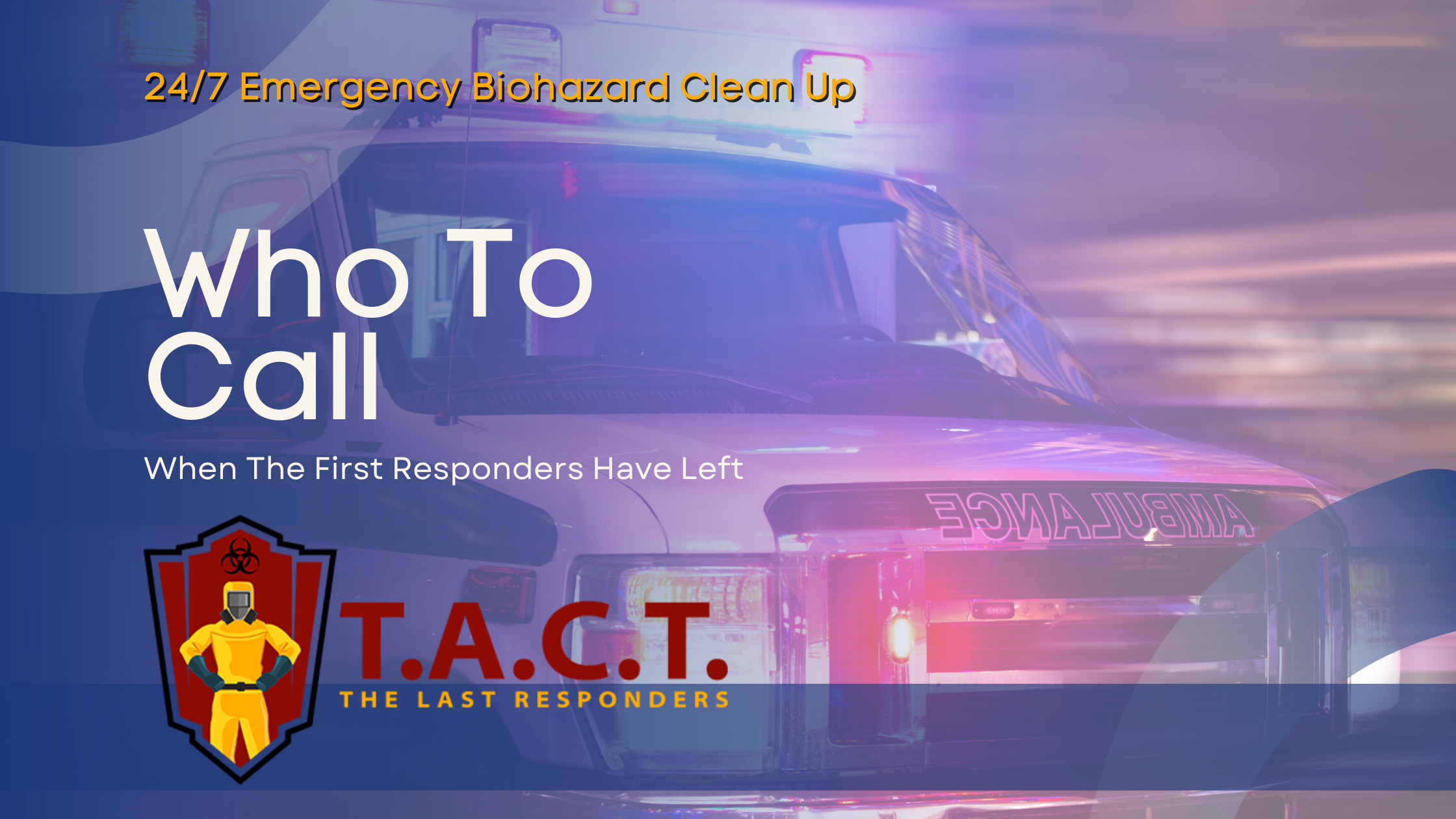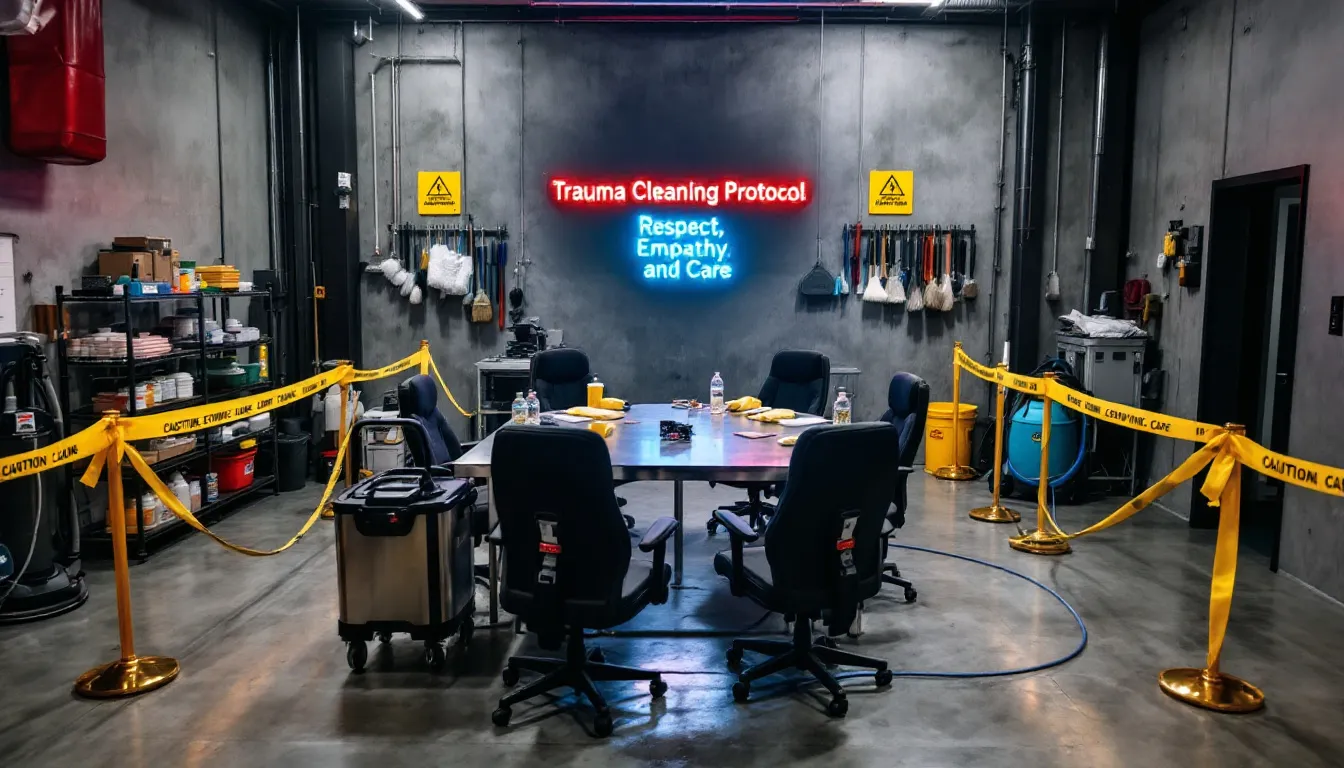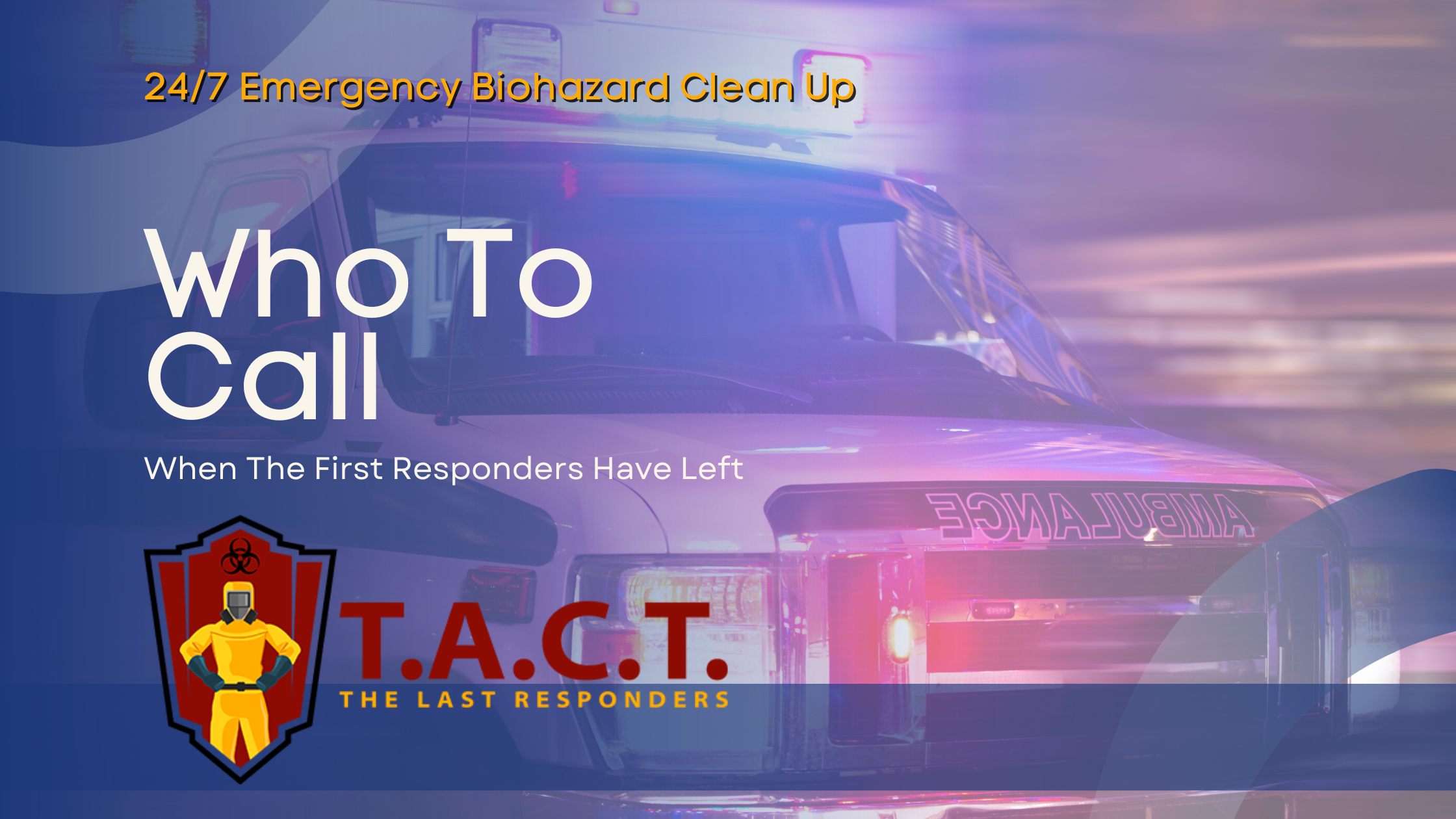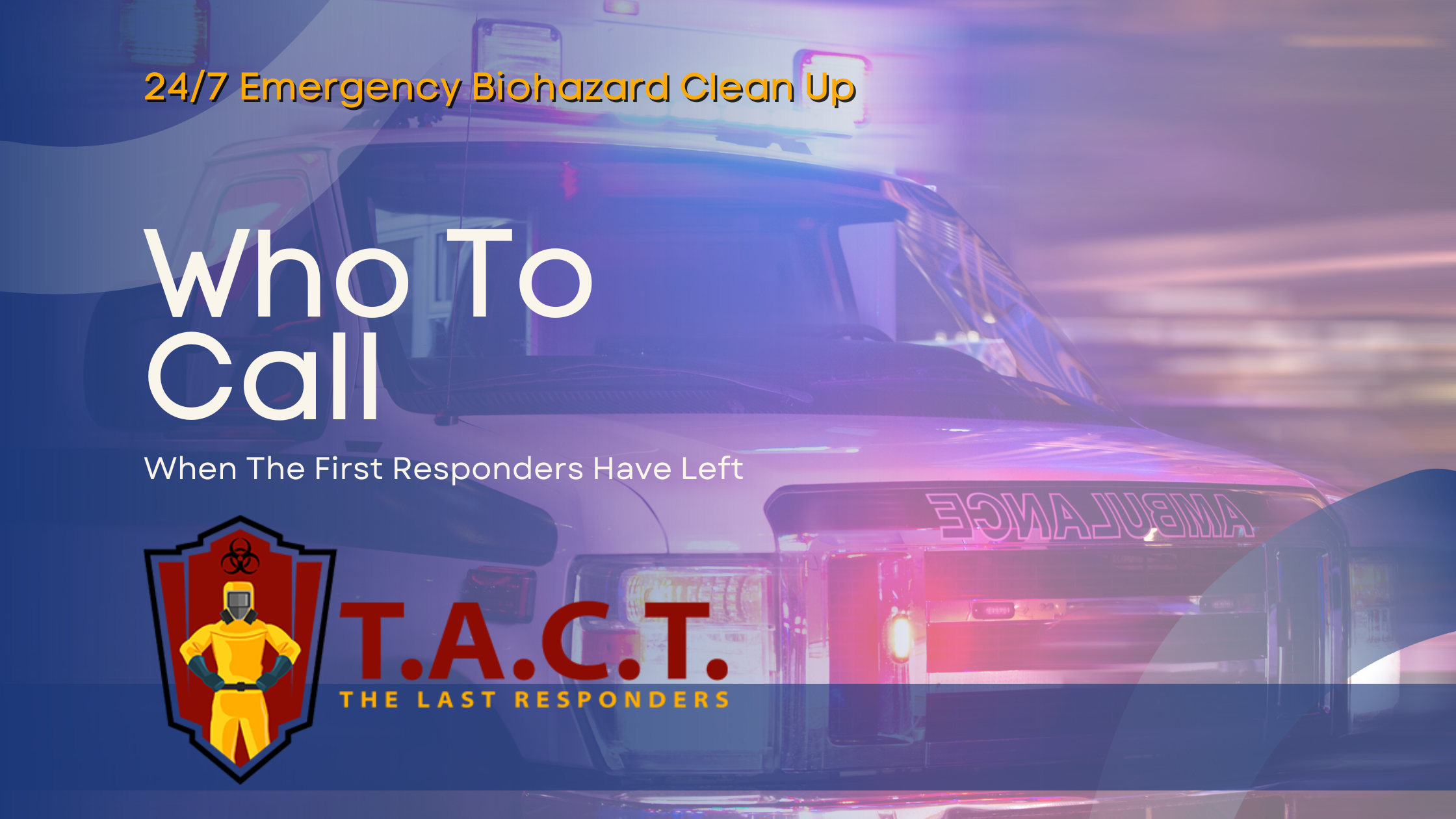What is Trauma Cleaning

What Is Trauma Cleaning? An In-Depth Look at This Essential Service
Trauma cleaning is a specialized service that deals with the cleanup of properties affected by traumatic incidents like crimes, accidents, and unattended deaths. Unlike standard cleaning, trauma cleaning involves handling biohazardous materials such as blood and bodily fluids. This makes the process crucial for ensuring safety and health. In this article, we’ll explore what is trauma cleaning, its importance, and the processes involved.
Key Takeaways
Trauma cleaning is a specialized service that focuses on restoring properties impacted by traumatic incidents, requiring trained professionals to manage biohazardous materials and adhere to strict health regulations.
Safety is crucial in trauma cleaning, necessitating the use of specialized personal protective equipment and meticulous attention to detail during the cleaning and decontamination processes.
Specialized training and certification for trauma cleaners equip them with the necessary skills to handle hazardous situations, ensuring they can effectively manage the cleanup and support emotional needs of affected individuals.
Understanding Trauma Cleaning
Trauma cleaning is a specialized service focused on restoring properties impacted by traumatic incidents such as homicides, accidents, and suicides. Unlike regular cleaning, trauma cleaning involves addressing hazardous materials that pose significant health risks. Trauma scene cleaners handle situations that most people can hardly imagine, including accidents, unattended deaths, violent crimes, and suicides. This service involves not just cleaning but also decontamination and restoring safety.
The cleaning process in trauma cleaning varies significantly from standard cleaning methods due to the need for specific training and adherence to stringent health regulations. Trauma cleaners are properly trained professionals who deal with biohazardous materials such as blood, bodily fluids, and other potentially infectious materials. They aim to restore the affected area. This will be done while adhering to health and safety protocols.
Crime scene cleanup, for example, involves a thorough decontamination process to ensure that all biohazards and body fluids are effectively cleaned. This meticulous approach is crucial for preventing the spread of infections and ensuring the safety of the property occupants.
Trauma cleaning is a vital service that goes beyond mere cleaning; it is about reclaiming spaces that have been marred by traumatic events, making them safe and habitable once again.
The Importance of Safety in Trauma Cleaning

Safety is paramount in trauma cleaning due to the serious health risks posed by hazardous materials. Trauma cleaners must use specialized equipment and personal protective equipment (PPE) to safely handle these potentially infectious material. The use of PPE, such as nitrile gloves, eye protection, and fluid-resistant coveralls, is essential to guard against exposure to harmful substances like bloodborne pathogens and toxic chemicals.
Training in the use and maintenance of PPE is vital for the safety and effectiveness of trauma cleaners. Each trauma scene presents unique risks, and selecting the appropriate PPE involves assessing these risks to ensure adequate protection. Advances in PPE technology aim to enhance comfort and usability while maintaining high safety standards, which is crucial for the demanding nature of trauma cleaning.
The cleaning process in trauma scenes requires meticulous attention to detail to protect both the trauma cleaners and the property occupants. Adhering to strict safety protocols and using advanced PPE allows trauma cleaners to effectively mitigate the risks associated with biohazard cleaning and ensure a safe and thorough decontamination process. Safety is not just a priority; it is the foundation upon which the entire trauma cleaning service is built.
Specialized Training for Trauma Cleaners
Specialized training is essential for trauma cleaners due to the complexities and risks involved in their job. The Trauma and Crime Scene Technician certification equips professionals with the knowledge and skills needed to handle contaminated materials and establish safety protocols. This certification is available in both live-stream and in-person training formats, providing flexibility for aspiring trauma cleaners.
The training covers a wide range of topics, including the use of PPE, containment setup, biohazard handling, hazardous material disposal, and compliance with OSHA and EPA standards. The IICRC Trauma and Crime Scene In-Person Classroom Training offers hands-on experience guided by industry experts, ensuring that trauma cleaners are properly trained and prepared for real-world scenarios. Notably, there are no prerequisites to obtain the Trauma and Crime Scene Technician certification, making it accessible to those interested in entering this field.
Training is crucial for crime scene cleaners as it enables them to effectively manage the decontamination process and protect themselves from biohazards. The higher level of training and expertise required for trauma cleaners compared to average cleaners underscores the importance of specialized training in this field.
Through rigorous training and certification, trauma cleaners are equipped to handle the challenges of their job with professionalism and competence.
The Trauma Cleaning Process

The trauma cleaning process is a meticulous and multi-step procedure designed to restore a safe environment after a traumatic event. It starts with a detailed assessment of the scene to evaluate the extent of damage and contamination. This initial assessment is crucial for understanding the specific cleaning requirements and planning the necessary strategies and resources for effective cleanup.
The process involves several stages, each addressing different aspects of the cleanup. From the initial assessment and planning to biohazard cleaning and decontamination, and finally, the proper disposal of hazardous materials, each step is vital for ensuring a thorough and safe restoration of the affected area.
Initial Assessment and Planning
The first step in the trauma cleaning process is the initial assessment and planning. A thorough evaluation during this phase helps in creating a tailored cleaning strategy for effective trauma cleanup. The assessment focuses on identifying risks and hazards at the scene, which informs the cleaning strategy and ensures that the necessary resources are allocated for the task.
Planning based on assessment findings is crucial for thorough and safe trauma cleaning. Understanding the level of contamination and the specific cleaning requirements allows trauma cleaners to develop a comprehensive plan that addresses all aspects of the cleanup, ensuring a meticulous and efficient process.
Biohazard Cleaning and Decontamination
Biohazard cleaning and decontamination are critical components of the trauma cleaning process. This involves the use of professional-grade disinfectants and advanced cleaning equipment to ensure thorough disinfection of biohazardous materials. Decontamination involves using hospital-grade disinfectants to eliminate pathogens after biohazardous materials are removed.
In cases of unattended deaths, specialized cleaning techniques are employed to manage the decomposition process and its impact on the environment. The removal of hazardous substances, such as those found in drug labs, is also a critical aspect of trauma cleaning services. Utilizing specialized cleaning methods enables trauma cleaners to effectively manage biological hazards and ensure a safe and clean environment.
Proper Disposal of Hazardous Materials
Disposing of hazardous materials properly is essential to prevent health risks and comply with legal requirements. Trauma cleaning involves the disposal of porous and semi-porous affected materials before cleaning. This step is crucial for ensuring that all biohazardous materials are safely removed from the scene.
Improper disposal of hazardous materials can lead to serious health risks for cleaners and the surrounding community. Complying with legal requirements for hazardous material disposal helps to protect both public health and the environment.
Trauma cleaners must follow strict guidelines for disposing of hazardous waste, ensuring safety and compliance with environmental regulations.
Emotional and Psychological Aspects

The emotional and psychological aspects of trauma cleaning cannot be overlooked. Trauma cleaners often deal with traumatic and emotionally charged scenes, which can weigh heavily on their emotional well-being. Staying professional while having empathy for affected individuals is a key challenge faced by trauma cleaners.
Trained professionals in trauma cleaning exhibit compassion and sensitivity to clients’ emotional needs, allowing them to support the healing process. Showing empathy helps families begin the healing process after experiencing loss or trauma.
Maintaining professionalism and empathy enables trauma cleaners to provide invaluable support to those affected by traumatic events.
Beyond Crime Scenes: Diverse Applications of Trauma Cleaning

Trauma cleaning is not limited to crime scenes; it is required in multiple scenarios, including unattended death cases, industrial accidents, and hoarding situations. In unattended death cases, decomposition can lead to the release of bodily fluids and gases, causing significant damage to the home.
Hoarding situations often necessitate trauma cleaning due to the accumulation of hazardous waste and unsanitary conditions. Trauma cleaning companies often capitalize on diverse services to maintain profitability, addressing complex clean-up scenarios. By providing a wide range of services, trauma cleaners can cater to various needs and ensure that all types of trauma scenes are effectively managed.
Legal Considerations in Trauma Cleaning
[Incorporated text with “risk”]
Legal considerations are crucial in trauma cleaning, as the process entails not only cleaning but also adhering to legal requirements and ensuring safety. Trauma cleaning personnel must obtain explicit permission from the property owner before initiating any cleaning activities. Additionally, they are required to follow strict confidentiality protocols regarding personal information encountered during their work.
After dealing with the initial challenges, the team was able to move forward with the project.
Legal considerations in trauma cleaning include:
Obtaining explicit permission from the property owner before initiating any cleaning activities
Adhering to legal requirements and ensuring safety
Following strict confidentiality protocols regarding personal information encountered during their work
Trauma cleaning companies ensure confidentiality by arriving discreetly and respecting the privacy of those affected. Complying with local regulations for the disposal of biohazardous materials ensures safety and legal adherence.
Trauma cleaning professionals must follow strict guidelines for disposing of hazardous waste, ensuring safety and compliance with environmental regulations. Documentation of proper biohazardous waste disposal and registration with the state health department must be provided to clients.
Financial Aspects of Trauma Cleaning
Trauma cleaning is considered a profitable field due to the constant need and higher pay resulting from specialized skills. The income range for crime scene technicians typically falls between $40,000 to $80,000 per year. Trauma cleaning businesses can generate hundreds of thousands of dollars in revenue annually.
A limited number of service providers in a high-demand market allows trauma cleaning business to make substantial profits. By offering specialized and essential services, these businesses can maintain profitability and continue to support communities in need.
Summary
Trauma cleaning is an essential service that goes beyond mere cleaning; it involves meticulous decontamination and restoration of safety in spaces marred by traumatic events. From specialized training and strict safety protocols to the emotional and psychological aspects, trauma cleaners play a vital role in helping individuals and communities heal.
Understanding the diverse applications, legal considerations, and financial aspects of trauma cleaning highlights the complexity and importance of this field. By providing compassionate and professional services, trauma cleaners make a profound impact on the lives of those affected by trauma.
Frequently Asked Questions
What is trauma cleaning?
Trauma cleaning is a specialized service that restores properties affected by traumatic incidents, such as homicides and accidents, through expert decontamination and the safe handling of hazardous materials. This service is essential for ensuring the environment is safe and habitable again.
Why is safety important in trauma cleaning?
Safety is essential in trauma cleaning to mitigate the serious health risks associated with hazardous materials. Adhering to safety protocols and using personal protective equipment ensures the well-being of both cleaners and property occupants.
What kind of training do trauma cleaners need?
Trauma cleaners need specialized training, such as the Trauma and Crime Scene Technician certification, focusing on PPE usage, biohazard handling, and adherence to OSHA and EPA standards. This ensures they are equipped to handle hazardous environments safely and effectively.
What are the different applications of trauma cleaning?
Trauma cleaning is essential for addressing unattended deaths, industrial accidents, crime scenes, and hoarding situations, ensuring that these environments are restored safely and respectfully. The application of trauma cleaning serves to support the healing process for affected individuals and communities.
How profitable is the trauma cleaning business?
The trauma cleaning business is highly profitable, driven by consistent demand for specialized services, with technicians earning between $40,000 and $80,000 annually and businesses generating substantial revenue.
Latest news

Bio Cleaning Services
Read More
Nosy neighbors peeking? T.A.C.T. North Atlanta offers discreet biohazard remediation for rodent infestations, mold, hoarding, and more. Unmarked vehicles, quiet experts, full privacy—24/7 service at 470-781-4775.
Read More
